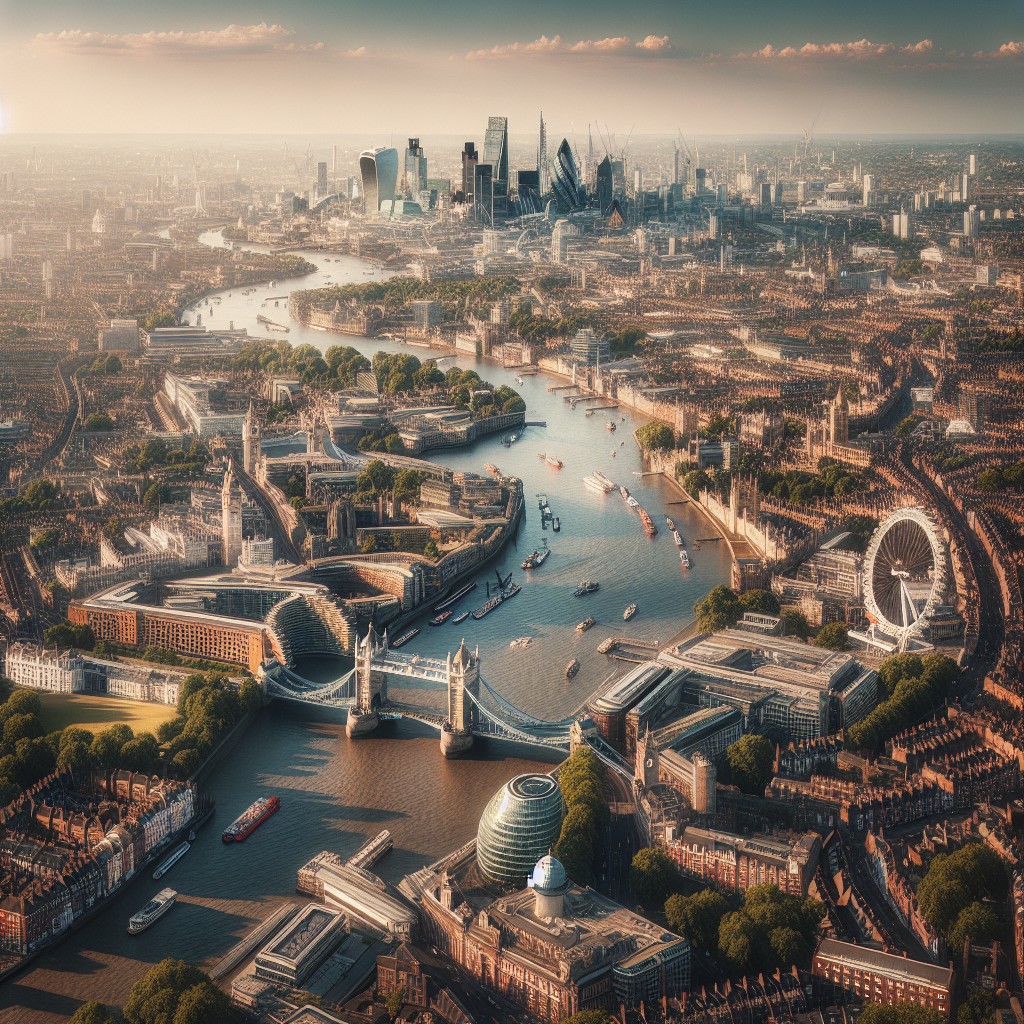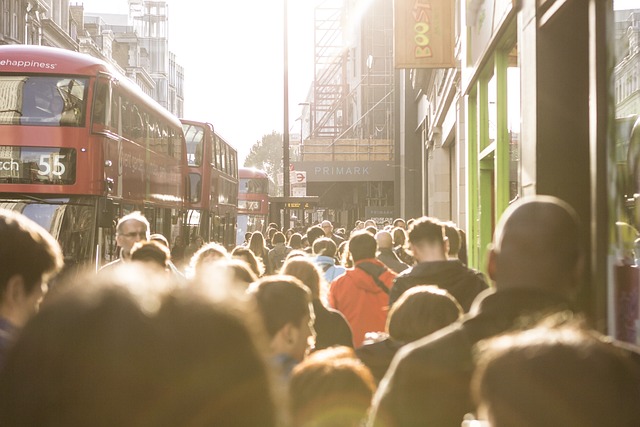
Greater London, often referred to simply as London, is the capital city of England and the United Kingdom. It is one of the most important and influential cities in the world, known for its rich history, diverse culture, and thriving economy. With a population of over 8 million people, it is also one of the most populous cities in Europe.
Summary
- Greater London has a rich history dating back to Roman times and has grown into a diverse and vibrant city.
- The city’s geography and climate vary from the bustling urban center to the peaceful countryside.
- Greater London is home to a diverse population, with over 8 million people from different backgrounds and cultures.
- The city’s economy is a hub of business and finance, with many international companies and financial institutions based in the city.
- Greater London is a cultural and entertainment hub, with a thriving arts scene, world-class museums, and a vibrant nightlife.
History of Greater London: From Roman Times to the Present Day
The history of Greater London dates back to Roman times when it was founded as a settlement called Londinium. Over the centuries, it has witnessed numerous significant events and milestones that have shaped its development. From the Norman Conquest in 1066 to the Great Fire of London in 1666, the city has experienced both triumphs and tragedies.
One of the key moments in London’s history was the Industrial Revolution in the 19th century, which brought about rapid urbanization and economic growth. The city became a major center for trade, finance, and industry, attracting people from all over the world. In the 20th century, London played a crucial role during World War II as it endured heavy bombing during the Blitz but remained resilient.
Geography and Climate of Greater London: Exploring the City’s Landscape
Greater London is located in southeastern England and covers an area of approximately 1,572 square kilometers. It is bordered by the counties of Essex to the east, Hertfordshire to the north, Surrey to the south, and Berkshire to the west. The River Thames runs through the city, dividing it into North London and South London.
The climate in Greater London is classified as temperate maritime, with mild winters and cool summers. The city experiences moderate rainfall throughout the year, with July being the driest month and October being the wettest. The average temperature ranges from 2°C (36°F) in winter to 22°C (72°F) in summer.
Population and Demographics of Greater London: Who Lives in the City?
Greater London is a melting pot of cultures and ethnicities, with a diverse population that reflects its cosmopolitan nature. According to the latest census data, the city is home to over 8 million people, making it one of the most populous cities in Europe. The population density is also high, with over 5,000 people per square kilometer.
The demographics of Greater London are constantly changing, with a mix of people from different backgrounds and nationalities. The city has a large immigrant population, with residents from all over the world, including India, Pakistan, Bangladesh, Nigeria, and Poland. English is the most widely spoken language, but there are also many other languages spoken in the city.
Economy of Greater London: A Hub of Business and Finance
Greater London is a major global financial center and a hub for business and commerce. It is home to the London Stock Exchange, one of the largest stock exchanges in the world, as well as numerous multinational corporations and financial institutions. The city’s economy is diverse and encompasses a wide range of industries, including finance, professional services, technology, creative industries, tourism, and retail.
The financial sector is particularly important to the economy of Greater London, contributing significantly to its GDP. The city is known for its expertise in banking, insurance, asset management, and fintech. It attracts investors from around the world and serves as a gateway to Europe for many international businesses.
Culture and Entertainment in Greater London
Greater London is renowned for its vibrant culture and entertainment scene. It is home to numerous world-class museums, art galleries, theaters, music venues, and cultural institutions. The city has a rich cultural heritage and has been a source of inspiration for artists, writers, musicians, and filmmakers throughout history.
Some of the key attractions and landmarks in Greater London include the British Museum, the National Gallery, the Tate Modern, the West End theater district, Buckingham Palace, the Tower of London, and the London Eye. The city also hosts numerous festivals and events throughout the year, including the Notting Hill Carnival, the Chelsea Flower Show, and the New Year’s Eve fireworks display.
Education in Greater London: Top Universities and Schools
Greater London is a hub for education and research, with some of the world’s top universities and schools located in the city. It is home to prestigious institutions such as the University of Oxford, Imperial College London, University College London, and the London School of Economics. These universities attract students from all over the world and contribute to the city’s intellectual and cultural diversity.
In addition to higher education, Greater London also has a strong primary and secondary education system. There are numerous excellent schools in the city, both public and private, offering a high standard of education. The city also has a wide range of vocational and technical colleges that provide training in various fields.
Transportation in Greater London: Getting Around the City
Getting around Greater London is relatively easy thanks to its extensive transportation system. The city has an extensive network of buses, trains, trams, and underground lines that connect all parts of the city. The iconic London Underground, also known as the Tube, is one of the oldest and most extensive underground railway systems in the world.
In addition to public transportation, Greater London also has a comprehensive network of roads and highways that make it easy to travel by car. However, traffic congestion can be a problem during peak hours, so many residents choose to use public transportation instead.
Sports and Recreation in Greater London: A City for Athletes and Fans
Greater London is a hub for sports and recreation, with numerous sports teams and venues located in the city. It is home to world-famous football clubs such as Arsenal, Chelsea, and Tottenham Hotspur, as well as cricket grounds, rugby stadiums, and athletics tracks. The city has hosted major sporting events such as the Olympic Games and the Wimbledon tennis tournament.
In addition to professional sports, Greater London also offers a wide range of recreational activities for residents and visitors. There are numerous parks, gardens, and green spaces where people can enjoy outdoor activities such as jogging, cycling, and picnicking. The city also has a vibrant fitness and wellness scene, with gyms, yoga studios, and wellness centers located throughout the city.
Future of Greater London: The City’s Development and Growth Plans
The future of Greater London looks promising, with plans for further development and growth in the coming years. The city is undergoing significant regeneration projects that aim to improve infrastructure, create new housing, and enhance public spaces. These projects will help meet the growing demand for housing and accommodate the increasing population.
In addition to physical development, Greater London is also focusing on sustainability and environmental initiatives. The city aims to reduce carbon emissions, improve air quality, and promote renewable energy sources. It is also investing in smart city technologies to improve efficiency and enhance the quality of life for residents.
Greater London is a city of immense importance in the UK and the world. Its rich history, diverse culture, thriving economy, and world-class amenities make it an attractive destination for residents, businesses, and tourists alike. With its ongoing development projects and plans for the future, Greater London is poised to remain a global powerhouse for years to come.
FAQs
What is Greater London?
Greater London is a region in the southeastern part of England that encompasses the city of London and its surrounding areas. It is the largest and most populous metropolitan area in the United Kingdom.
What is the population of Greater London?
As of 2021, the estimated population of Greater London is around 9 million people.
What are some of the major attractions in Greater London?
Greater London is home to many famous landmarks and attractions, including the Tower of London, Buckingham Palace, the London Eye, the British Museum, and the Houses of Parliament.
What is the climate like in Greater London?
The climate in Greater London is generally mild and temperate, with cool winters and warm summers. The average temperature in January is around 7°C (45°F), while the average temperature in July is around 19°C (66°F).
What is the economy like in Greater London?
Greater London has a diverse and thriving economy, with a strong focus on finance, business, and tourism. It is home to many multinational corporations, as well as a large number of small and medium-sized enterprises.
What is the transportation system like in Greater London?
Greater London has an extensive transportation system that includes buses, trains, and the famous London Underground (also known as the Tube). There are also many cycling and walking routes throughout the city.





